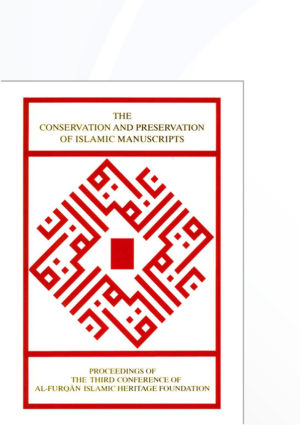Enes Karic

Sadly, the manuscript treasures and the collections of Arabic, Turkish, and Persian manuscripts in Bosnia & Herzegovina shared the same fate as the Republic of Bosnia & Herzegovina during the war of Serbian military aggression against the state (1992-1996). The unbearable war pictures from Sarajevo, presented day after day to the world, have often showed the sad ruins of the National Library of Bosnia & Herzegovina. As is well known, the Library was burned down in the early summer of 1992 by Serbian paramilitary forces. It was an act that has often been compared with Nazi criminal acts against books in the 1930s and the 1940s.
The dimensions of the disaster are still not fully known. The present director of the National Library, Enes Kujundzic, has informed UNESCO and other relevant institutions about the thousands of books and hundreds of manuscripts burned down together with the Library.
Another tragic loss was the collections of Arabic, Turkish, and Persian manuscripts at the Institute for Oriental Studies, also destroyed by constant Serb shelling during the summer of 1992. Fortunately, a large two-volume catalogue of the manuscripts of the Institute of Oriental Studies was saved. It was prepared by Lejla Gazic and Salih Trako. Nevertheless, there is an urgent need for an edited and printed version of the catalogue. It is noteworthy that all documents about the inhabitants of medieval Bosnia & Herzegovina in the Oriental Institute, particularly the earliest census records and, more importantly, the oldest Turkish tax and court registers, have been completely destroyed.
On the positive side, the collections of Arabic, Turkish, and Persian manuscripts of the Ghazi Husrev-bey Library, the oldest Bosnian library, were saved during the war. The most important manuscript collections of the Ghazi Husrev-bey Library were transferred at least three times from one shelter to another. .In the beginning of the shellings, these collections were placed in the treasury of the Central Bosnian National Bank, which was considered the most suitable place under the circumstances.
Thanks to the efforts of Mustafa Jahic, the present director of Ghazi Husrev-bey Library and his staff, all of its manuscript collections have been saved. These include most notably the Muṣḥaf of Fadil Pasha Sharifovich; its ijāzag display exceptional calligraphy, beautiful decorations and, like arabesca, much mainly floral ornamentation. Moreover, thousands of various Islamic manuscripts stored in mosques were destroyed in the war. It is reasonable to assume that almost every old Bosnian mosque had many manuscripts in its library, particularly in eastern Bosnia, along the Drina river. Today, with the exception of the municipality of Gorazde, there are no more Bosnian Muslims living at all in that region.
Now that the disaster is over, we must focus our efforts on publishing the already prepared catalogues of Islamic manuscripts available in Bosnia & Herzegovina before the war. Also we expect the support of similar institutions all over the world to make copies and films of the manuscripts that were found in Bosnia & Herzegovina for centuries.
The role of Al-Furqān Islamic Heritage Foundation is particularly important in rebuilding the Ghazi Husrev-bey Library, which is nearly totally ruined. We hope that the initial leading support of Al-Furqān Foundation will encourage other institutions to assist the Library with urgently needed materials and equipment. Such assistance will be crucial in affirming, once again, the Islamic tradition in Europe, and allowing the unique Bosnian cultural experience to survive and thrive.
| Source note: This article was published in the following book: The Conservation and Preservation of Islamic Manuscripts, Proceedings of the third conference of Al-Furqān Islamic Heritage Foundation, 18th-19th November 1995 - English version, 1995, Al-Furqān Islamic Heritage Foundation, London, UK, pp. 5-6. Please note that some of the images used in this online version of this article might not be part of the published version of this article within the respective book. |


